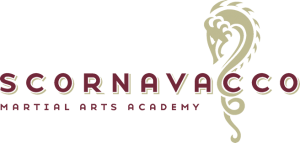 I’m not sure where my daughters are going to attend college. They’re 2 and four months, for gosh sakes. But I do know that their father and I started saving. It feels good to save. A tiny bit of movement toward a sense of security that is still lacking in other aspects of our lives. We’re fortunate, too. Their uncle Brian gives them stock each year instead of presents – or actually, should I say, in addition to finger puppets, Mardi Gras masks, and books that his wife loved as a child. He says it’s “not much,†but I wish he admitted it, every bit helps. We’re very grateful.
I’m not sure where my daughters are going to attend college. They’re 2 and four months, for gosh sakes. But I do know that their father and I started saving. It feels good to save. A tiny bit of movement toward a sense of security that is still lacking in other aspects of our lives. We’re fortunate, too. Their uncle Brian gives them stock each year instead of presents – or actually, should I say, in addition to finger puppets, Mardi Gras masks, and books that his wife loved as a child. He says it’s “not much,†but I wish he admitted it, every bit helps. We’re very grateful.
Harvard Magazine announced their recent tuition increase. A 3.8% increase, bringing the total for tuition and fees to a whopping $50,724 per year. Thankfully, financial aid increased 9% to a lovely sum of $158 million. The college takes pride in its need-blind admission process. So, if Siena and Petra were actually college-bound age, they would benefit from an application process that did not even take a peak at our savings accounts, mortgage payments, or investments (or lack thereof!). Princeton offers the same benefit, as does Yale and Brad’s and my undergraduate Alma Mater, Northwestern.
Princeton, though, wins the prize for not only initiating a path toward need blind admissions, but for ensuring that its students who cannot afford to pay the exorbitant price tag of nearly $200,000 for four years at the university (along with a lifetime of the academic skills and social interactions that come with a Princeton education) do not have to go into financial debt. Other schools, like my Alma Mater Northwestern, have a need-blind admission process, but only the students whose families fall in a lower-income bracket (under $40,000, approx) can truly go through college without shouldering student loan debt.
Hats off to Princeton! And three cheers for the schools that are taking the financial risk on its applicant pool. But let’s put this in perspective. Few schools can afford to be need-blind, let alone support a full-need financial aid system. Only six colleges and universities, in fact, are need-blind with a concomitant financial aid system that offers to pay for its students who cannot afford to the fees: Amherst, Dartmouth, Harvard, MIT, Princeton, Yale. Six out of over 4,000!
So what are we, as parents, to do? Save, sure. But there’s got to be more. Whether our kids are preschool or college-bound age, we constantly live within a tension of wanting (or needing!) education to “cost less†and wanting (and needing!) to pay teachers and other educators for their time and expertise, let alone paying for the day to day operations of schools, e.g. transportation, lease or mortgage payments, insurance premiums. Even homeschoolers have to shell out a lot of cash to pay for curriculum materials, family trips, testing fees, etc. Let’s think through the multitude of educational experiences that do not cost money, or at least do not cost a lot of extra money. I’m going to start brainstorming. Would love to hear your ideas too. A list in the works!
